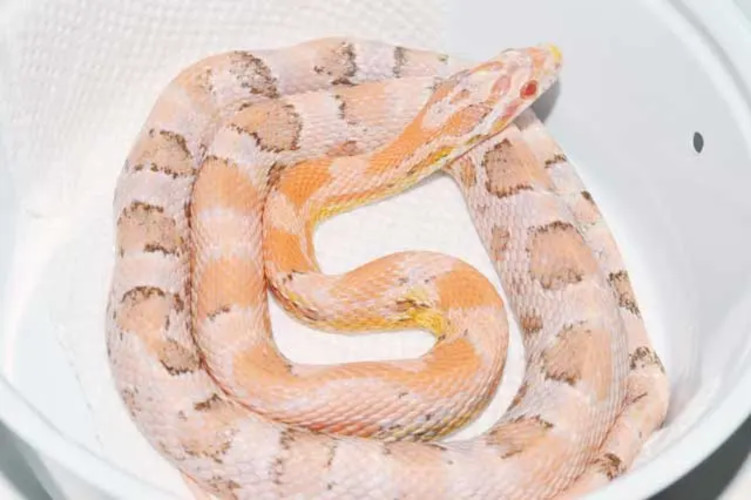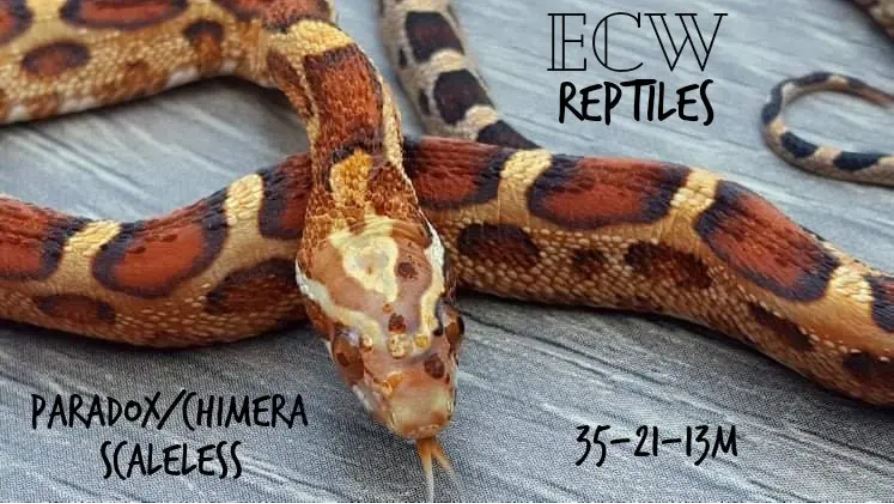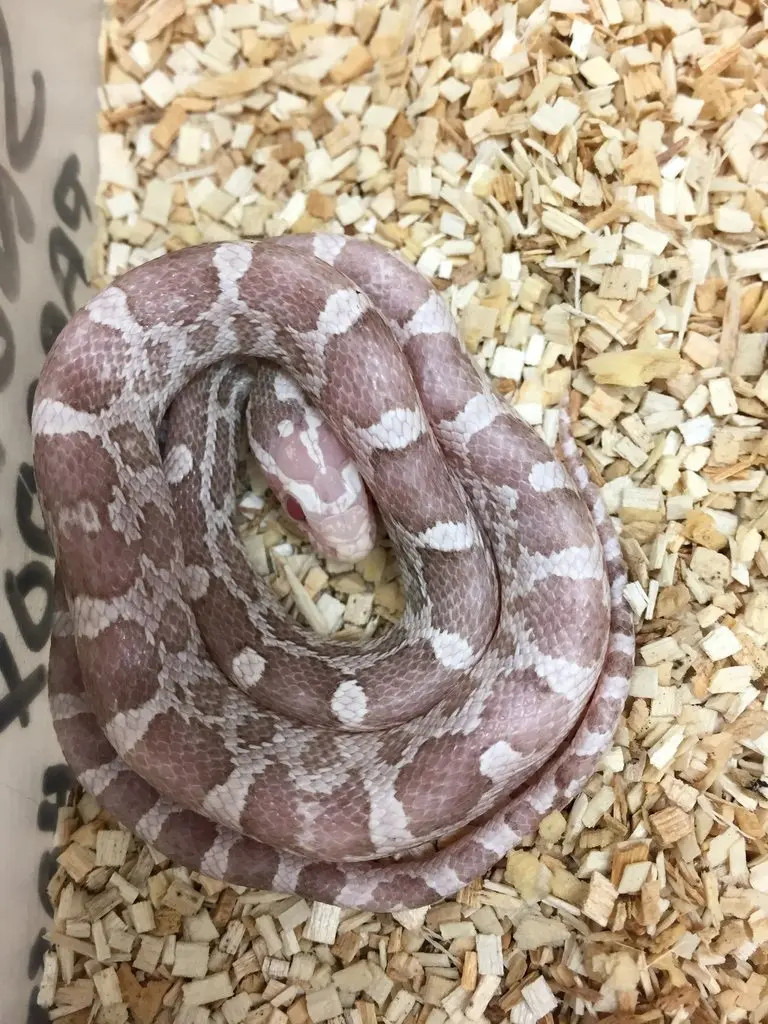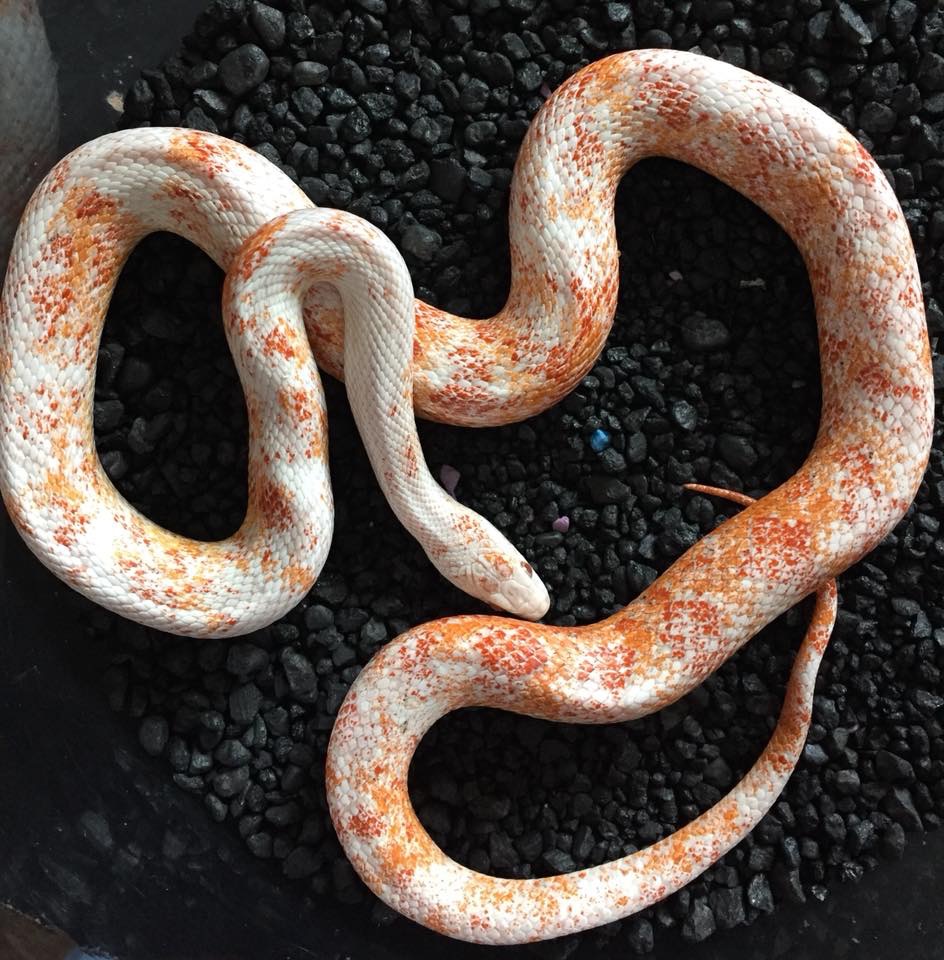Paradox
Type: Other
Issues: N/A
First Produced In: Unknown
Availability: Rarest
Last Updated: 2021-12-07
Do you have any suggestions or corrections for this article?
Click here to contribute feedback
About
Paradox corns typically are primarily one morph with small sections of another morph visible. Some examples that are more extreme may have large patches of another morph visible. Some corns display “paradox markings”, usually a single scale of a different color than the base morph (such as a snow with a red scale or an anery with a red scale). These would not typically be labeled as paradoxes.
"The term “Paradox” is an loose term used in the reptile industry/hobby that has no scientific/genetic value. It simply describes an anomalous phenotype, anywhere from a small, nearly undetectable colour/pattern difference all the way up to extreme 50/50 animals.
The two most common forms of “paradox” that we encounter in the hobby are mosaics and chimeras.
A mosaic is an animal that has genetically distinct cell lines, but they originated from a single zygote.
A chimera is an animal that has genetically distinct cell lines, but they originated from more than one zygote/individual.
Mosaic example:
You breed an Albino to a Normal/Wild Type and what you hatch are het Albinos. But one of them has random full Albino patches on it. This happens because of a few reasons, one of which being the wild-type allele of the gene is lost in a subset of the cells in this animal’s body. So the animal then has two genetically different sets of cells in its body - 2n and 2n-1 - but all of the cells in its body have the same embryo as their origin. This type of “paradox” animal is a mosaic.
Chimera example:
You breed an Pinstripe to a Normal/Wild Type and what you hatch are Pinstripe and Normals, but one of the Pinstripes has random Normal patches on it. This happens because, most often, two different fertilized ova fuse to create a single embryo. This give you an animal with two genetically different sets of cells in its body - 2nw and 2np - that each had an independent origin. This type of “paradox” animal is a chimera.
Bilateral animals are almost assuredly simple mosaics. The first division of the fertilized embryo sets up the left/right asymmetry, so if the chromosomal non-disjunction event happens there, then every cell on one side of the animal will lack one of the alleles while every cell on the other side of the body will have both of the alleles." - Travis Wyman
History
Paradox has not been able to be reproduced intentionally through selective breeding. It seems to appear randomly and it is very rare.
Appearance
Head
The appearance of the head will vary based on what two morphs are being expressed.
Body
The appearance of the body will vary based on what two morphs are being expressed.
Belly
The appearance of the belly will vary based on what two morphs are being expressed.
Tail
The appearance of the tail will vary based on what two morphs are being expressed.
Proven Lines
No known proven lines
Related Traits
No known related traits






